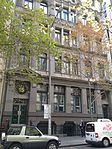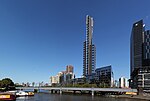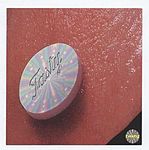Museum of Modern Art Australia
Art museums and galleries in AustraliaArt museums and galleries in MelbourneModern art museums
The Museum of Modern Art Australia (MOMAA), alternatively named the 'Museum of Modern Art of Australia' or 'Museum of Modern Art (and Design) of Australia', was founded by Australian art patron John Reed in 1958 in Tavistock Place, a lane-way off 376 Flinders Street, Melbourne. It held exhibitions of important contemporary Australian and international art of the late 1950s and early 1960s. The Museum operated until 1966 and was formally dissolved in 1981.
Excerpt from the Wikipedia article Museum of Modern Art Australia (License: CC BY-SA 3.0, Authors).Museum of Modern Art Australia
Tavistock Place, Melbourne Melbourne
Geographical coordinates (GPS) Address Nearby Places Show on map
Geographical coordinates (GPS)
| Latitude | Longitude |
|---|---|
| N -37.818909 ° | E 144.961888 ° |
Address
Bennelong House
Tavistock Place
3000 Melbourne, Melbourne
Victoria, Australia
Open on Google Maps









